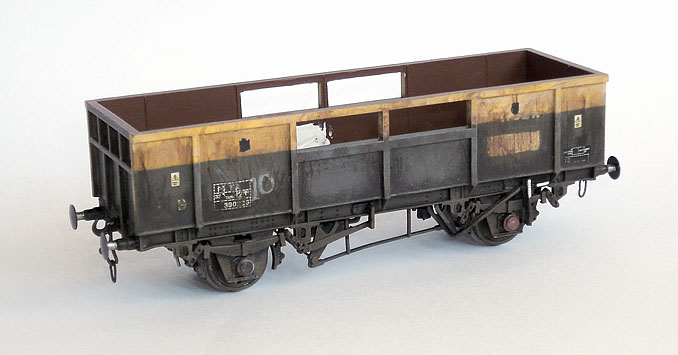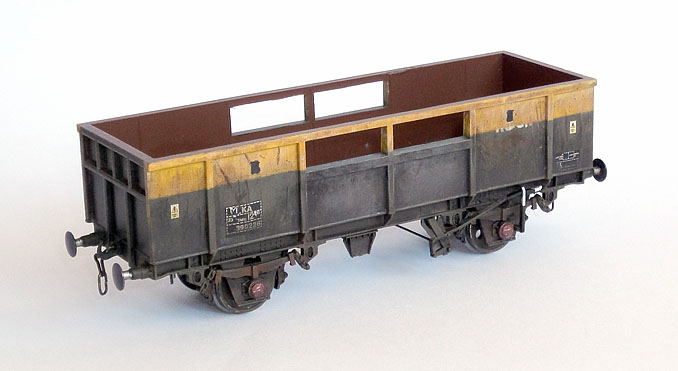
I did some more work on the limpet I started the other day. I applied the modern warning flashes (very nice Fox transfers) and blacked out the DC prefix on the data panel which I forgot to do last time. The body has had a little bit more work with washes and powders to try and tone down the contrast a bit, otherwise it's much as before. The white filler on the inside is to cover a soldering iron mark from the denting process, it'll get sanded down and painted over tonight hopefully.
The other main job was the underframe - I fitted Smith's instanter couplings (my first time!) and had a go at a cheapskate modification to the springs to make them look a bit more like the correct Bruninghaus variety. I had a quick try at paring off the originals as suggested by Nigel Burkin and James Hilton, but found it really difficult. As a compromise, I fitted slices of Evergreen U channel about 1mm by 2.5mm to each end of the Bachmann moulding using styrene solvent, to represent the collars around the real springs. This was quite easy (and cheap!) and does kind of suggest the Bruninghaus springs, but I don't know if it falls under the category of "best left alone" - in a sense it replaces the accurate-but-for-wrong-prototype originals with something which is closer to the prototype, but less accurately made. What do people think?

I've been looking for a convenient underframe colour to use as a default on these 4 wheel wagons, and I've ended up with Vallejo "Leather Brown". It's a pretty good base, and it's nice to have something which doesn't need mixing. I shaded it with a black ink/grey paint wash and then drybrushed lightly with Games Workshop "Graveyard Earth". Various details were picked out with powders, and a few final spots washed to give deeper shadows.
I have another 4-ish to do in this livery, comments and criticism would be welcome before I start painting them in a batch. Any pics of slightly less battered examples would be useful - I've seen several modellers do nice weathering jobs with mainly small rust spots on (faded) factory paint and these look very nice, but I haven't found pictures as a reference so far - is it because ZKAs/MKAs all got tatty before digital cameras were commonplace?



5 Comments
Recommended Comments
Create an account or sign in to comment
You need to be a member in order to leave a comment
Create an account
Sign up for a new account in our community. It's easy!
Register a new accountSign in
Already have an account? Sign in here.
Sign In Now